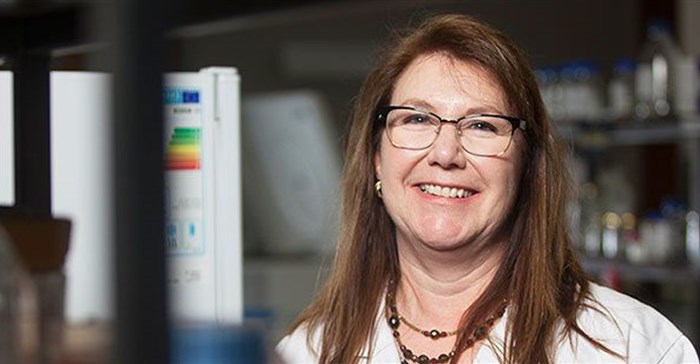
Globally, diabetes is rising at an alarming rate due to the obesity epidemic. The World Health Organisation (WHO) estimates that it will affect 592-million individuals worldwide by 2035. Locally, up to one in five people live with this disease without even knowing it.
Professor Annalise Zemlin, a lecturer in the Division of Chemical Pathology at Stellenbosch University, has been studying the use of HbA1c (glycated haemoglobin) as a screening tool for diabetes in the Bellville South community in the Western Cape. She obtained her PhD at the Faculty of Medicine and Health Sciences on this topic. Her study focused on a mixed-ancestry population, and forms part of a bigger research project in the Faculty to unravel diabetes in the local context.
Until recently, health problems in sub-Saharan Africa have consisted mainly of infectious diseases such as HIV infection, tuberculosis (TB) and malaria. But with Africa mirroring the global increases in obesity, the prevalence of non-communicable diseases like diabetes and cardiovascular disease is increasing. “Non-communicable (chronic) diseases are also increasing in South Africa and placing a burden on the healthcare system," Zemlin points out. “When left untreated, diabetes can cause severe complications, including renal failure and cardiovascular disease."
People with diabetes have the same risk for cardiovascular disease as those who have already had a heart attack. As a result, researchers are trying to enhance screening tests for the early detection of diabetes and cardiovascular disease.
Many countries now use a HbA1c blood level of more than 6,5% (48 mmol/mol) as a cut-off screening tool to detect diabetes. This test is performed on the haemoglobin found in red blood cells. This oxygen-carrying protein binds and retains a “memory" of the average sugar levels in the patient's blood over the last two to three months (the average lifespan of a red blood cell). The higher a person's blood glucose levels, the higher the HbA1c level that will be observed. Zemlin performed evidence-based research to establish if this HbA1c cut-off could be used locally.
However, these cut-off levels were not suitable for the Bellville South's mixed ancestry population and could even lead to the underdiagnosis of diabetes. According to Zemlin a cut-off of 6,1% (43 mmol/mol) is more optimal for this population. She also investigated the levels of adiponectin and E-selectin as novel markers of cardiovascular dysfunction and found that they were not very useful in this group.
Her study emphasised the importance of evidence-based research in the local context. “There are some limitations to the accuracy of the HbA1c tests. For example, the test may not be accurate for people with anaemia. Additionally, racial differences and differences in the rate of haemoglobin glycation have also been described."
The challenge to refine diabetes screening tools and diagnose people earlier remains critical given the burden of this disease, says Zemlin. “The rise in non-communicable diseases will inevitably challenge our healthcare system, which is already buckling under the burden of HIV and TB. Additionally, HIV and its treatment may increase a person's chances of developing diabetes. Diabetes may increase susceptibility to TB, due to its effect on the immune system.
“For this reason, early diagnosis of diabetes and prediabetes (its precursor) remains a vital challenge in our setting," Zemlin concludes.